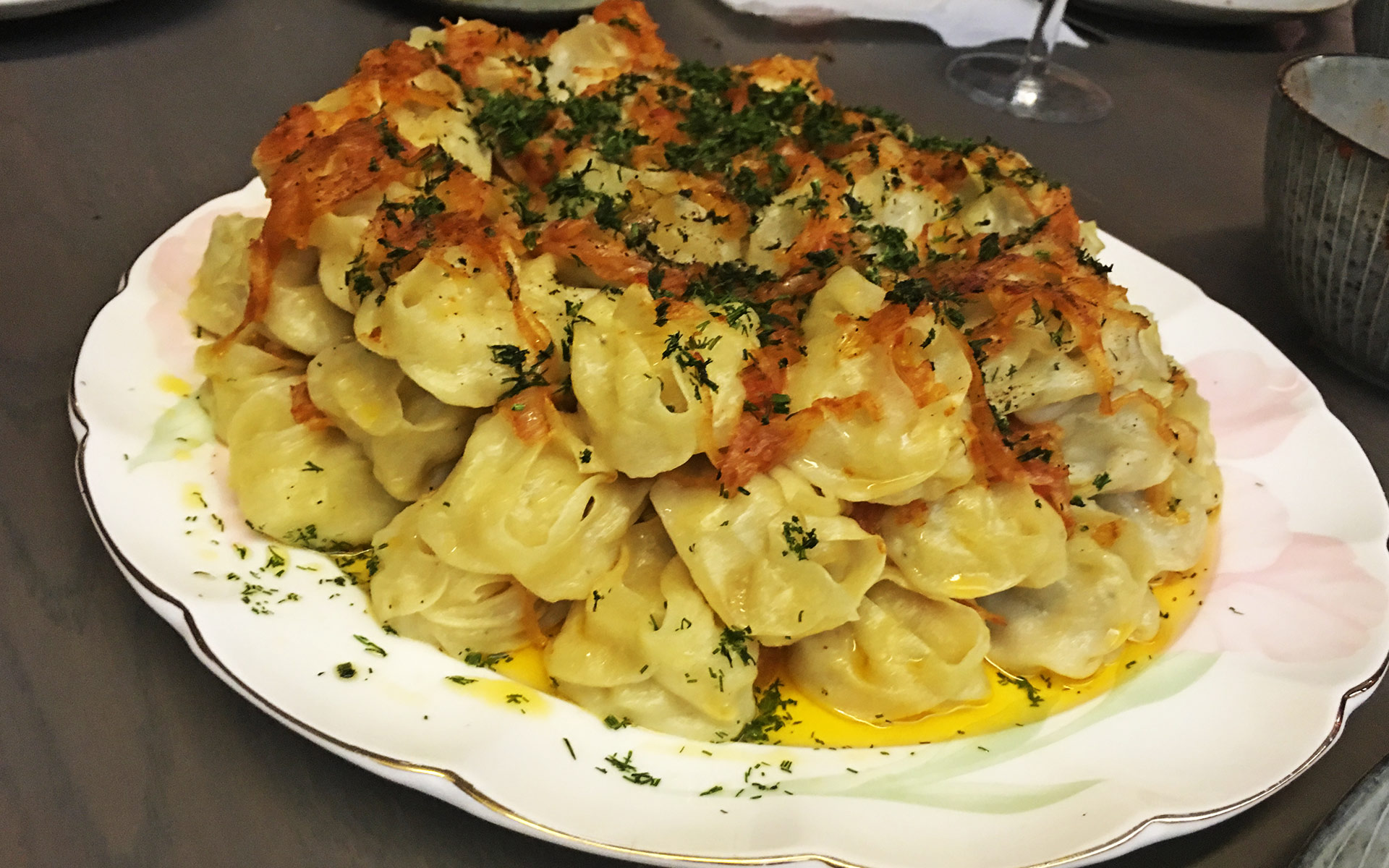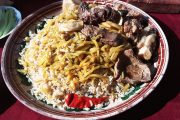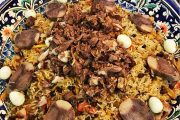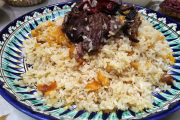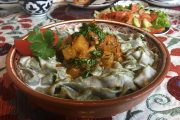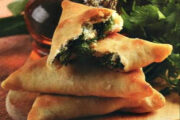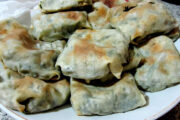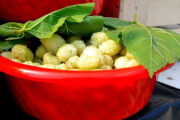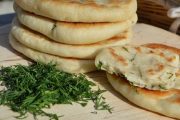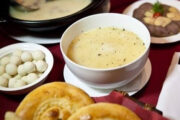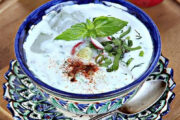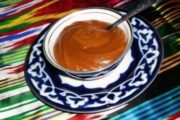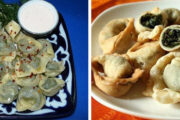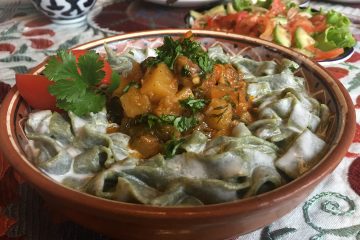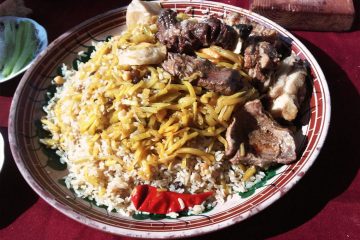Food of Central Asia is a reflection of the region’s long history of cultural and ethnic “melting pot”, as well as the diversity of its nature. Thus, travelling from one town to another you can see and taste everything that hints about spices of the Indian cuisine or smokes of nomadic tribes, colours of Persian delicacies or shapes of Chinese meals, or even local adaptation of Russian and Korean recipes. But all these somehow incorporated and often served in one dastarhan – the word meaning both a traditional tablecloth, as well as an everyday feast (yes, each lunch or dinner here is a feast).
And don’t forget that many fruits, like apples, originate from Central Asia, while Uzbekistan alone (according to Biodiversity International) is the home for 83 traditional varieties of apricot, 43 of grape, 40 of apple, 30 of walnut, 21 of pomegranate, 15 of pear, all grown within the farmers’ production systems.
Obviously, when travelling with us, you will try different types of meals, fruits and beverages. We also encourage you to learn some recipes during special master-classes that can be arranged almost in every town and village.
Trying to introduce at least some highlights of our cuisine, we will keep placing here the information about different meals, recipes, places to dine or learn etc.
Vegetarian traditions in the land of meat lovers
Booming tourism industry means that many local restaurants are looking for ways to adapt for the needs of vegetarian or even vegan guests. But, despite the reputation of meat-loving nations, there are many authentic recipes based on local plants. If springtime in Central Asia is marked by a colourful festival of Navruz with its own culinary specialties, as well as an abundance of greens and seasonal plants, then summer and autumn are time for delicious vegetables and fruits. All these create a whole cluster of meals, pastry and snacks without using any kind of meat. Vegetarians would love it!
Here are some examples:
Ko’k Somsa
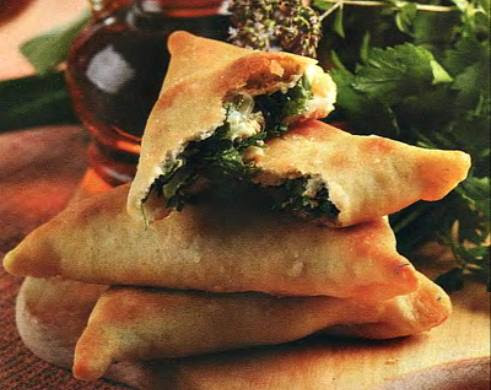
From mid-March till May, you will see a variety of fresh greens, including the local favourites – Otkuloq /“horse ear”/ or Chumchuqko’zi / “bird eye”/, mountain mint, Pudina, Jag-Jag etc. All these delicacies are used as a staffing for Ko’s Somsa, baked in tandur or in a home oven. Some add cubes of lard (yes, not quite vegetarian) or new potato for additional texture. In later seasons Ko’k Somsa can be prepared using leeks, coriander and wild spinach.
Ko’k Chuchvara
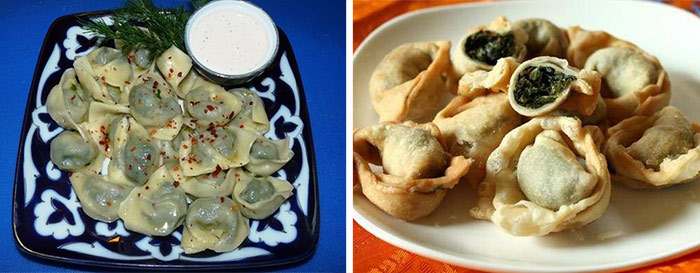
Humble dumplings can be quite complicated, when they are staffed with a rich mixture of greens and are also gently boiled in a chicken (oops, not vegetarian again) or vegetable broth, served with sour cream called qattiq on the side…
Another version of the Ko’k Chuchvara is the one fried in oil, but usually served cold as a snack.
Bichak
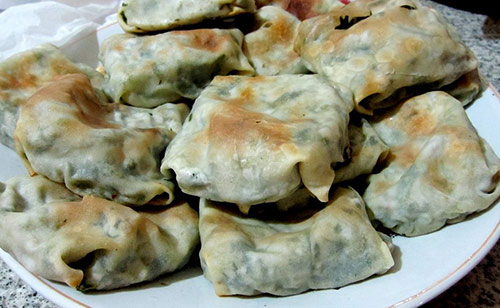
Pan fried green pies made from filo pastry called Bichak and eaten en mass, light and is amazingly tasty! It is very popular in Samarkand and southern provinces, where it is baked in a clay oven (tandir).
Chalpak
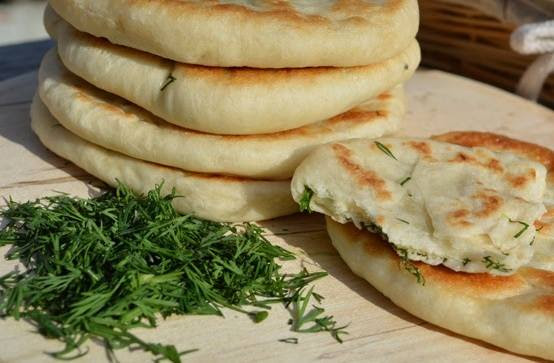
A variety of homemade breads from a type of unleavened dough and some greens by fast frying on a very hot pan /almost no oil/. It is usually prepared before the legendary Sumalak.
Sumalak
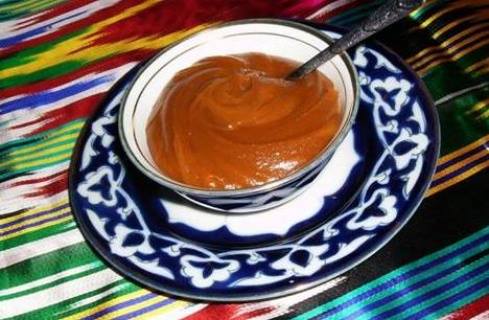
Sumalak is a sweet wheat-sprouts jam or a paste made during the spring festival of Navruz (Oriental New Year). It is cooked overnight together with a big group of neighbours and relatives. And while you stir with wooden shovel in huge pot, women and children sing special songs and dance to the rhythm of the doyra drum. Welcome to join them!
Chalop
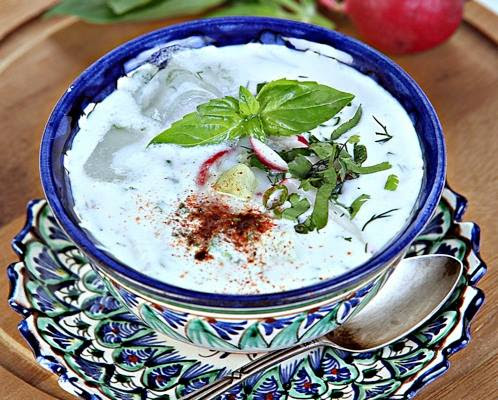
Chalop is a cold soup made from local sour yogurt, reddish, cucumber, basil and herbs. Must starter during hot days!
Go’ja
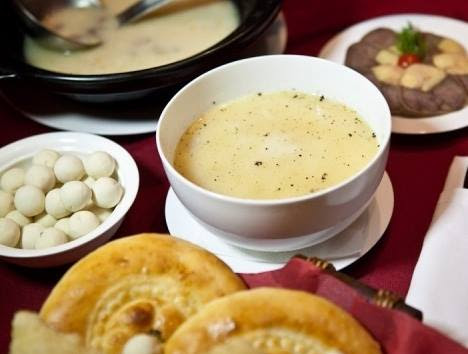
Another type of cold soup /best made in mountains or steppes/, with white corn and special wheat. Slowly boiled for 5-6 hours and served by mixing sour yogurt and spices. Pure delight!
White mulberry
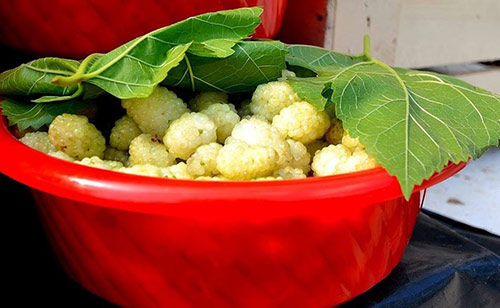
Great Silk Road brought to Central Asia a special respect for white mulberry. It should be pure white with no dots. Families and neighbours often harvest it from big trees by shaking high branches and catching falling berries on cotton cloth. Eaten raw, dried or even pressed nectar. Try a snack made from dried white mulberry – rich in vitamins and something original to bring back to your home country.


